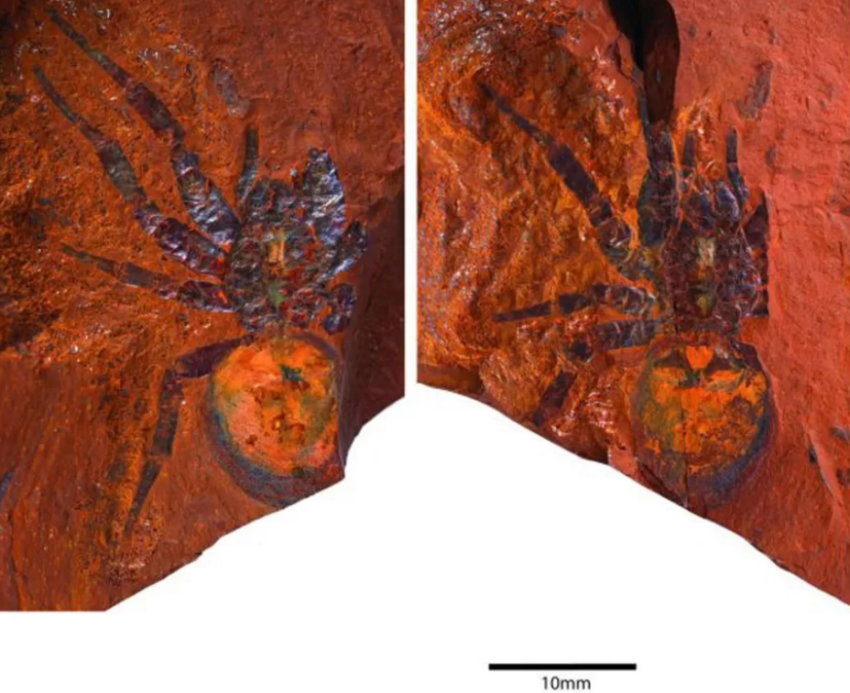Australia still has a reputation for spiders. This amazing fossil of a giant Trapdoor spider proves it.
The fossil is 11 to 16 million years old and was found in central Australia, in a very dry area of New South Wales called McGraths Flat.
It is the first specimen of this particular species found and only the fourth spider fossil discovered in Australia.
The new species was officially named Megamonodontium mccluskyi. Although Megamonodontium mccluskyi is four times the size of its modern day relative, the brush footed trapdoor spider, it is still relatively small.
Its body measures 23.31 millimeters, or just under an inch. With its legs spread, it can fit comfortably in the palm of an adult human’s hand. But in the end, this is still the second largest spider fossil ever found. Scientists think the area where the fossil was found was a lush rainforest millions of years ago.
Palaeontologist Matthew McCurry said from the University of New South Wales and the Australian Museum: “Only four spider fossils have ever been found throughout the whole continent, which has made it difficult for scientists to understand their evolutionary history. That is why this discovery is so significant, it reveals new information about the extinction of spiders and fills a gap in our understanding of the past.”
The fossil was part of a large collection of fossils called an assemblage, where many fossils are found together. Small details of the giant Trapdoor spider were preserved, which helped scientists identify it.
“Not only is it the largest fossilized spider to be found in Australia but it is the first fossil of the family Barychelidae that has been found worldwide,” says arachnologist Robert Raven of Queensland Museum (arachnologist: A person who studies spiders, mites, ticks, or scorpions.)
“There are around 300 species of brush footed trapdoor spiders alive today, but they don’t seem to become fossils very often. This could be because they spend so much time inside burrows and so aren’t in the right environment to be fossilized.”
